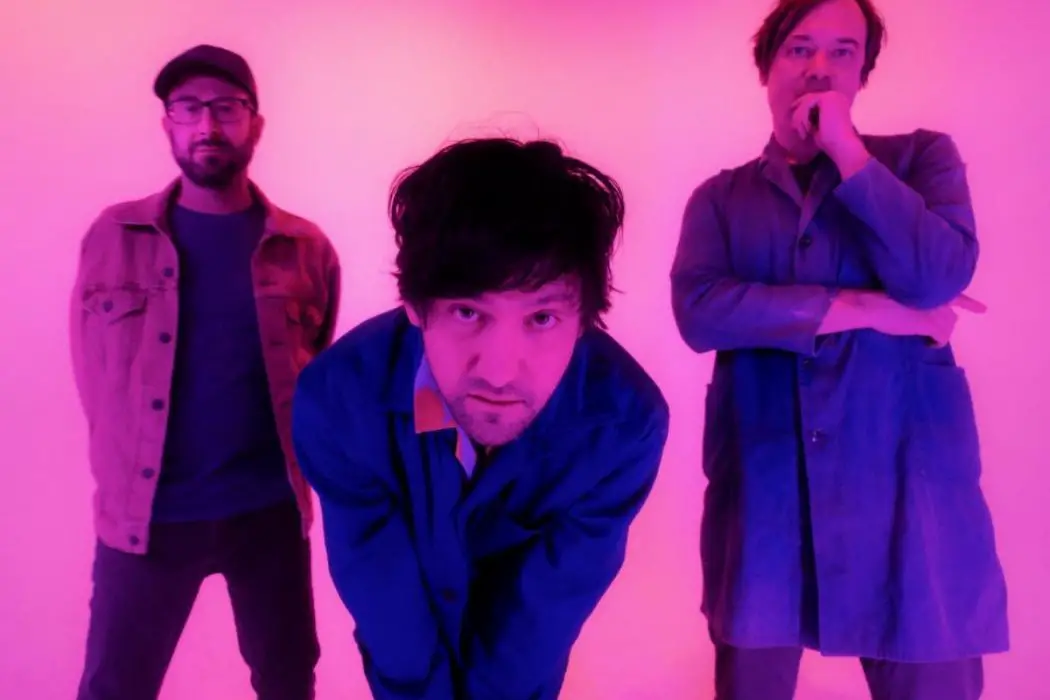Drawing upon loss and love, gloominess and life’s previous moments, Bright Eyes’ ‘Down in the Weeds, Where the World Once Was’ is comfortingly familiar but refreshing too.
Stream: ‘Down in the Weeds, Where the World Once Was’ – Bright Eyes
Ahh, Conor Oberst, how your words ring so much truth for the misunderstood and anxious- an alarm of reassurance marking a time of reflection, the lyrics like a shared journal where thoughts are translated into beautiful poetry that stabs people in the heart with its relatability. Nearly a decade after the last Bright Eyes release, Down in the Weeds, Where the World Once Was (released 21 August) is familiar enough that it’s welcomed with sentimentality but contains an amount of variation in sound and grandiose instrumentation that it’s refreshing too.

Lyrically, it touches on death and ageing. ‘My phantom brother came to me/ His backlit face was hard to see/ I couldn’t move, I couldn’t scream’ go the opening lines of “Tilt-A-Whirl”, set to a solemn acoustic guitar. It’s a reference to his brother who passed away in 2016, something that’s made more evident in ‘Life’s a solitary song/ No one to clap or sing along/ It sounds so sweet and then it’s gone/ So suddenly’ but could easily apply to the general feeling of loneliness and loss. It evokes the same kind of helpless frustration of earlier Bright Eyes tracks, such as “Something Vague” from Fevers and Mirrors (Now and again it seems worse than it is/ But mostly the view is accurate/ You see your breath in the air as you’ll climb up the stairs/ To that coffin you call your apartment’) and “Waste of Paint” from Lifted or The Story Is in the Soil, Keep Your Ear to the Ground (‘It’s clear to see it’s not them but me/ Who’s lost my self-identity/ As I hide behind these books I read/ While scribbling my poetry/ Like art could save a wretch like me/ With some ideal ideology’), but with less angst and a more refined sense of acceptance.
When “Persona Non Grata” was released back in March it felt like an appropriate time. It was the beginning of lockdown and the nostalgia was comforting while the melodrama- the addition of bagpipes- added to the sense of gloom. As the introductory track to new Bright Eyes material, it explored the notion of finding reconcile and peace while intertwining political and personal themes. It’s an approach that continues throughout Down in the Weeds, Where the World Once Was. “To Death’s Heart (In Three Parts)” makes reference to the November 2015 terrorist attacks in Paris, while also bringing in sentiments of disintegrating through time and dealing with the absence of a loved one while “Mariana Trench” puts spotlight on living in a modern society that can make us feel minuscule. The wider social issues are a backdrop for how personal lives are lived. While not a sole focus of the narrative, they’re an unavoidable part of living and therefore brings realism to the story.
Look up at that Everest
Look down in that Mariana Trench
Look now as the crumbling 405 falls down
Oh, when the big one hits
Look out for the plainclothes
Speak soft what the wiretap knows
Look out on that ever-widening money trail and where it goes
Where does it go?
“Mariana Trench,” Bright Eyes
Oberst has always had a way of adding a fictionalized element to pain, over-describing sentences so that they could flow out of a fairy tale. Fevers and Mirrors is an example of this, where the first person is substituted for third person pronouns and character-driven so that the listener is transported into the haunted worlds. But with Down In The Weeds, Where the World Once Was there’s a sense of older age reflection. Things are said as they are, rather than sugar-coated. ‘When I’m trapped inside my bedroom planning out my last resort/ I have a great imagination/ So I just teleport/ And I’m back with you in Benson, sitting on that rotting porch/ Where we only drank the good stuff/ That we could afford’ goes “Stairwell Song”, which sonically blends melancholy with hopefulness, the twinkling in the chorus followed by an orchestral arrangement being like a drive of perseverance. “Calais to Dover”, a love ballad that reverberates around the head long after listening to the album, consists of a verse dedicated to a former tour manager who passed away in 2011. In “Dance and Sing”, lines such as ’I’ll grieve what I have lost/ Forgive the firing squad/ How imperfect life can be/ Now all I can do is just dance on through’ suggests a coming to terms with things in a way that turning to music is the only way to get through them.
Came into view
I just fly through the light
Like the dust in the room
Reminisce
Walk through the zoo
And I sweep up my dreams
With a pan and a broom
Mmmhmm
Not sure what comes after
Life just went down a drain of rainy days
Way up in the rafters
I float where the organ fades
If it’s not all that important, then
Why make a fuss at all?
“Pan and Broom,” Bright Eyes
Sonically, the album is a collaboration with fellow members Mike Mogis and Nathaniel Walcott. As the band explained in the NPR Music Listening Party, “To Death’s Heart (In Three Parts)” began as a piece of music devised by Walcott. He then sent this to Oberst who came up with the vocal melody and lyrics. They then all worked on demos and finalized the elements while together in the studio. The result is eery, slow pacing and trailing guitar getting increasingly more energized as the song progresses until electrified solos and crashing drums take over. The harmonies of singer-songwriter Jesca Hoop were incorporated, adding a tender quality to lines such as ‘I’ll ask my love, what will she say?/ What’s it like to live with me here every fucking day?’ And ‘Just grab the kids real quick, can’t start the car/ Fading like a photograph, your taillights in the dark/ There’s nothing left no more to tear apart/ Agonies are infinite and sympathies just aren’t; they run out.’ The orchestral elements, present in “Dance and Sing” and “Stairwell Song” for example, started with Walcott’s arrangements- worked on months in advance as an electronic mock-up and then recorded by an orchestra of 35 players at Capital.
The songs on the album aren’t revolutionary, instead taking elements from the back catalogue. The opener, “Pageturner’s Rag”, is partly recorded in Pageturner’s Lounge- the Omaha bar co-owned by Oberst. It begins with a speech in Spanish by Corina Figueroa Escamilla, Oberst’s ex wife, and then a ragtime piano piece alongside conversation between Escamilla and Oberst’s mother. Like the monologues and narration at the start of every Bright Eyes record, it creates an element of confusion- causing the listener to be part of a bigger picture rather than just a string of music.
Life’s a game of solitaire
Amusement rides at county fairs
The Tilt-A-Whirl of our despair
Ends suddenly
Where’d it go?
Life’s a lonely love affair
Kaleidoscope beyond compare
It vanishes into thin air
So suddenly
“Tilt-A-Whirl,” Bright Eyes
“Pan and Broom”, with its new wave-style instrumentation, recalls the more electronic-leaning approach of Digital Ash in a Digital Urn and “Dance and Sing” and “Stairwell Song” with their violins and more theatrical production, feels similar to Cassadaga. Most songs are in this direction, broadened out with an atmosphere, rather than maintaining the folkiness of many Bright Eyes ‘classics.’
As the tenth record, Down in the Weeds, Where the World Once Was explores the conflict of grief and clarity, demons and love, while conceptually referring to the roots of memories and seeking out the precious moments that have become overgrown and lost amongst chaos.
Some people grew up with Bright Eyes, the emo sensibilities being a soundtrack to their youth, while others (likely younger listeners) have jumped on board as the years have gone by- dipping in and out while aware of the band’s existence. But sometimes you may be going through a tough period, whether it’s a form of depression, a broken heart, or sense of helplessness, and you’re listening to a Bright Eyes song and suddenly you feel spoken to. Understood. This sweetness and the softness in which it is delivered is what makes the music so longstanding, whether it’s a new song or one from the 2000s.
— —

Connect to Bright Eyes on
Facebook, Twitter, Instagram
Discover new music on Atwood Magazine
? © 2020
Down in the Weeds, Where the World Once Was
an album by Bright Eyes








